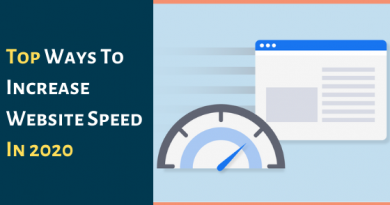Bouncing Rate Worries: Why Seeing is Not Believing; Tips to Reduce Bouncing Rate
Google generally considers high bounce rates as a reflection of low-quality web pages. Frequently leaving users will imply that content is not good enough. That may be partially right or wrong.
The technical definition of bouncing is that a “session that triggers a single request to the Analytics server.” If a visitor comes to a site and is not interacting a second time within 30 minutes, it will be treated as a bounce. The subsequent action should have been viewing another page or clicking a Call to action (CTA). The “one-and-done” event also becomes a contributory factor for bounce rate as it will be treated as single-page visits.
Problem in Computation
Even using multiple tabs by a visitor will go in the bounce account. This can happen despite the visitor making a sale from one tab and keeping another tab open and staying inactive for a span of 30 minutes. That is the sad part.
Panic from Bounce Rates
Among the many reasons, the major one would be the content or landing pages not performing well. But that is not the whole truth. There are situations when the content will be good. Still high bounce rates can bother. Don’t worry. It is on record that Google does not count bounce rate for ranking purposes.
Ways to Reduce Bouncing Rate
Certainly low bounce rate is better for optimization and conversions. Now look at options to reduce bounce rate to make a bigger number of conversions. Setting up event tracking is one quick to tap information from the site’s elements in identifying factors that are putting off people.
Misclassification of Traffic
One major reason of high bounce rate is Google’s action of bunching together all types of traffic under a single head “Direct Traffic.” That makes even referrals or email traffics being merged as direct traffic.
Ever since Google directed websites to use SSL certificates for ranking requirements many sites are rerouting non-SSL traffic from HTTP pages toward HTTPS pages.
Ideally, this is referral traffic and should not be counted as bounce because no further interaction is required. In an experiment, Groupon -indexed to show that 60 percent of their direct traffic was organic traffic. It is evident that misclassification of traffic is showing up as bounce rate and raising the blood pressure of business owners.
Some of the proactive steps to check soaring bounce rate is discussed here.
Set Up Page Events Tracker
Since Google cannot predict the reason why a site visitor is leaving hastily the reason must be tracked authentically.
In Google Analytics, an interaction is counted genuine when the visitor goes to another page. Ideally, Google must track both page views and events in deciding the interaction span and accordingly announce bounce rates.
Tell Google It is Not a Bounce
When there is a huge worry over bounce rates, creating events will give an accurate idea on what people are doing on a website. When events are added to pages, they will notify Google that an interaction has taken place and the user visit should not be treated as a bounce. Events can show how a visitor engages a site in terms of watching a video, signing up a newsletter or clicking a link.
Events are important as they are interactions that will not trigger loading of pages. In tracking events a custom code must be put on the website.
For setting up an event, go to Admin Dashboard of Google Analytics account and select ‘Goals’ under the ‘View’. Set a goal and choose the “Custom” option and proceed to other steps.
Put a title to the goal to identify and select “Event”. There may be more options to customize an event. After saving the goal set a unique event that is trackable on the website. Then the developer or admin can insert the code on the website.
Use Inbound Traffic Segmentation
To address the problem of Google’s flat and arbitrary bunching of all traffic as direct traffic without distinguishing organic traffic separately, create different landing pages to tap each traffic source.
This process of “inbound traffic segmentation” will consider different sources and will show who brings “warm” or “cold” leads. By creating unique paths for all major traffic channels it will be easy to see the contribution coming from individual channels.
Such landing pages will have a lower bounce rate because there is already a level of buy-in when the visitor gets there.
Google’s difficulty in differentiating between direct traffic and social traffic can be overcome by this segmentation with more clarity on traffic quality.
Device used by visitors are also important in assessing bounce rates which will be high for mobile users. If bounce is showing high for desktop users as well, it is a clue that the site needs help to make more visitors convert. This is a call to deploy new measures for improving the content with intelligent tweaks.
Test Site Speed and Examine Phantom Bounces
In addition to creating new landing pages and events, there are some more options to check bounce rate. If the bounce rate is more than 50 percent, check the site speed using Google’s PageSpeed Insights. Faster the site, lower will be the bounce rates.
A Google study says 53 percent of mobile ad clicks never materialise into a page view as page loading is slow. A big brand recently changed the hosting service and drew big relief from high bounce rates. It found bounce rate slumping from 60 to 5 percent overnight.
They also saw many other metrics improving. Prior to migration, they attributed the high bounce rate to “Phantom Bounces,” or bounces caused by site not loading on time and forcing visitors to quit.
Baby Steps to Reduce Bounce Rate
In order to cut the bounce rate, it is ideal to get visitors click on more than one page. Some practical steps in making them do so can include the following tiny steps.
Get Readers Comments: Encouraging readers to comment on posts to cut down bounce rate. The advantage is that when a reader scribbles a comment, he or she will be redirected to another page or the page will refresh. Making a reader visit more than one page will offset bounce rate. To make readers post comments, use the following methods.
• Place a request for comments at the end of all posts
• Ask a provoking question.
• Provide answer to all comments.
• Show a commenting community as social proof
Highlight A Subscription Offer: Compiling an email list is an indirect way to decrease bounce rate. As soon as the visitor subscribes to a list, he will be taken to a “thank you” page or “Confirm your subscription” page. This automatically lands the visitor on multiple pages.
Interlink to Other Content: By giving internal links to related posts within a post bounce rate can be controlled and better ranking can be ensured for various keywords.
Open External Links in New Tabs: Make sure that all links leading to external sites are opening in new tabs or windows.
Delay the Pop-ups
Though Pop-ups are designed as attention grabbers for interaction, Google will penalize any site that breaks guidelines on that matter. Google’s mobile-friendliness under the new algorithm keeps user experience as high priority in terms of better page display on mobile devices.
Pop-ups and overlays are intrusive and affect ranking as well these interstitials on mobile sites engulf the content and block the reading.
If Pop-ups can be made late by at least 3 seconds Google will not penalize the rankings and bounce rates will diminish. Trying exit pop-ups will be the best way to increase user experience and hasten last-minute conversions.




